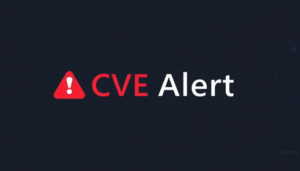CVE Alert: CVE-2025-12531 – IBM – InfoSphere Information Server
CVE-2025-12531
IBM InfoSphere Information Server 11.7.0.0 through 11.7.1.6 is vulnerable to an XML external entity injection (XXE) attack when processing XML data. A remote attacker could exploit this vulnerability to expose sensitive information or consume memory resources.
AI Summary Analysis
Risk verdict
High-risk exposure requiring urgent patching; there is no current indication of KEV or SSVC exploitation activity.
Why this matters
Remote XML processing can be exploited to exfiltrate data or exhaust memory, risking confidentiality and availability of data‑integration workflows. In typical enterprise deployments, an exposed XML endpoint could serve as a foothold for broader access within the data‑integration environment.
Most likely attack path
Attackability is network-based with low privileges and no user interaction required, and the scope remains within the affected process. An attacker would target XML parsing paths that allow external entity resolution, potentially loading local or remote resources. If the server is accessible from less-trusted networks, lateral movement is plausible within adjacent services or connected components.
Who is most exposed
Organizations running on-prem or cloud deployments of enterprise data‑integration servers with XML processing, especially where endpoints are reachable from less-secured networks, are most at risk. Typical exposure occurs where XML workloads are exposed to internal or partner traffic.
Detection ideas
- Logs showing XML DOCTYPE/ENTITY usage or external entity requests
- Memory/CPU spikes tied to XML processing
- Parser warnings or errors about unresolved entities or XXE attempts
- Anomalous outbound connections during XML handling
- IDS/IPS alerts for XXE indicators or unusual XML payload patterns
Mitigation and prioritisation
- Apply IBM security patches to the affected release stream (per DT454196/11.7.1.x guidance)
- Disable or restrict external entity processing in XML parsers where configurable
- Implement WAF/IPS rules to block XXE-like payloads; restrict access to XML processing endpoints
- Tighten network segmentation and enforce least privilege for the server
- Plan and execute patch testing in staging before production; ensure backups and monitor post‑patch
- If KEV or EPSS data indicate active exploitation, treat as priority 1
Support Our Work
A considerable amount of time and effort goes into maintaining this website, creating backend automation and creating new features and content for you to make actionable intelligence decisions. Everyone that supports the site helps enable new functionality.
If you like the site, please support us on Patreon or Buy Me A Coffee using the buttons below.


![[ALPHALOCKER] - Ransomware Victim: www[.]myriversidedentaloffice[.]com 2 image](https://www.redpacketsecurity.com/wp-content/uploads/2024/09/image-300x300.png)
